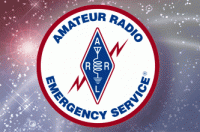|
Welcome,
Guest
|
TOPIC:
"Best Practices" on DMR 8 years 5 months ago #663
|
Great points from Carter.
Forwarded message From: [email protected] [MOTOTRBO] <[email protected]> Date: Tue, Nov 17, 2015 at 6:09 PM Subject: [MOTOTRBO] Best Practices for DMR To: [email protected] I'm not thinking about system cost here, only the concept of getting best utilization of TGs and TSs on the DMR system. I recently gave a presentation at Pacficon in San Ramon, CA regarding DMR "Best Practices". This is just an excerpt of that presentation. I received many thank you's from the audience indicating they have or had no idea of the impacts of utilizing wide-area TGs and I had some system owners and administrators who invited me to give a presentation at their club meetings. I do not want to be a DMR system traffic cop, only seek user education and comprehension of how the DMR system works. I point no finger at any one station, group, club or system, again just educating. I attached in the files section of this group a "Best Practices" PDF file you can refer as I continue. Slide Explanations of the file "Best Practices" found in the file section of this group. I thought NORCAL DMR had a good definition of the term "Best Practices" and adopted it. I paraphrase a couple of main thoughts. DMR Best Practices... are responsibilities not codified in a set of rules; rather they are outlined in a set of principles and guides. Operators... should utilize the systems so that the minimum amounts of resources are used on each transmission. You can see NORCALs "Best Practices" document at the NORCAL Website. Thank you NORCAL, you guys ROCK. I add, training, mentoring, understanding (user comprehension) is what leads to "best practices" On slide 3, I show what a cBridge looks like when a wide-area TG is in use, KEYS UP EVERYTHNIG, vs a Local or UA (PTT) TG which only lights up on one repeater. Keep this in mind when you are talking about visiting your Proctologist during a 30 min QSO on North America, COMM1, Southeast, Talk Groups etc, you are keying up a lot of resources that tie up a time slot as well. I compared it in my presentation to using a Linear Amplifier on HF to talk across the street. Not illegal, but certainly not in good practices and preventing other nearby stations to use nearby spectrum. Using a local or UA TG equates to turning that unnecessary amplifier off on HF to talk locally. I then showed some slides of cBridge shots showing user and what they are doing and how it impacts the system. These are just an example and I blanked out the user IDs to protect the "uninformed". Slide 4, Several users on one repeater in CA using Southwest for a long QSO. Yes, these are stations all using one repeater talking to another station on the same repeater. This activity is keying up everything in Arizona, New Mexico, Hawaii and most of California and Nevada. They have a local TG on that repeater. Using "Local "would minimize resources. Slide 5, Two stations on one NY repeater, on TAC 310, long QSO. Well I give these stations a 50% pat on the back because it is not on a wide-area TG, but it does prevent others around the nation from using TAC310. This repeater has a local TG. Using "Local" would minimize resources. Slide 6, This is one of my favorites. This station for many minutes was keying up on COMM1 for very short periods, repeatedly. I finally asked him by station call and name if he needed help. I thought maybe he was having a medical emergency. He responded by indicating he was repairing an external mic and soldering wires in a mic connection. He then ask how I knew who he was. I told him everything is time-date stamped and displayed on the cBridge. Response, I'll move somewhere else especially since you know who I am. HMMM, makes me wonder if the system was not IDing him if he would move to simplex or turn his radio off while soldering a mic connection. Who knows what to think. Slide 7. This group of stations showed up and started talking on COMM1, which is what it is for. All stations are using the same repeater. They QSYed to COMM1 because they were on the other TS that was being taken by North America from stations on a long QSO tying up that TS. They ask each other, what is COMM1? They did not know, so lets use it for long QSO. Who care if we tie up this TS... all over the country, just like the folks we moved from. The repeater they are using, has local on the same time slot. Using "Local" would minimize the resources. This is definitely a system comprehension issue. My conclusion, minimum to no training, minimum understanding, minimum compensation, minimum competency and for some... don't care. I don't blame many of these folks because many just don't know. These points I have addressed here is and should come from the local user groups. If you are a club, repeater owner, you should provide information so that users understand the concept of "Best Practices". Now let's continue to enjoy what we do, hopefully utilizing the concept of "Best Practices" Carter, KH6FV |
|
Please Log in or Create an account to join the conversation. |
Time to create page: 0.140 seconds
